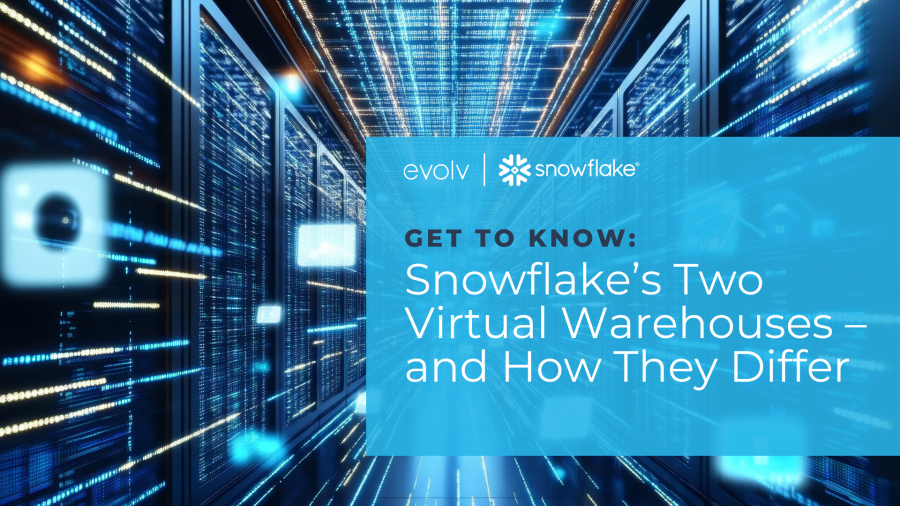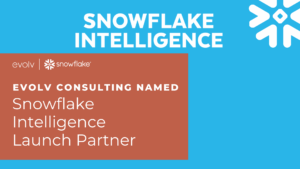by Chris Schneider
Snowflake’s virtual warehouses are the core engine powering compute operations across its platform for everything from running queries to performing data transformations. As data workloads continue to scale in volume and complexity, Snowflake has introduced advanced warehouse types designed to deliver greater performance and flexibility: Gen2 Warehouses and the Adaptive Compute Engine. These enhancements provide better handling of large, complex queries and dynamic workload demands, with minimal effort required to upgrade.
But how do they differ, and how do you know which one is right for you? I break it down below.
Gen2 Warehouses: Boosting Performance for Heavy Workloads
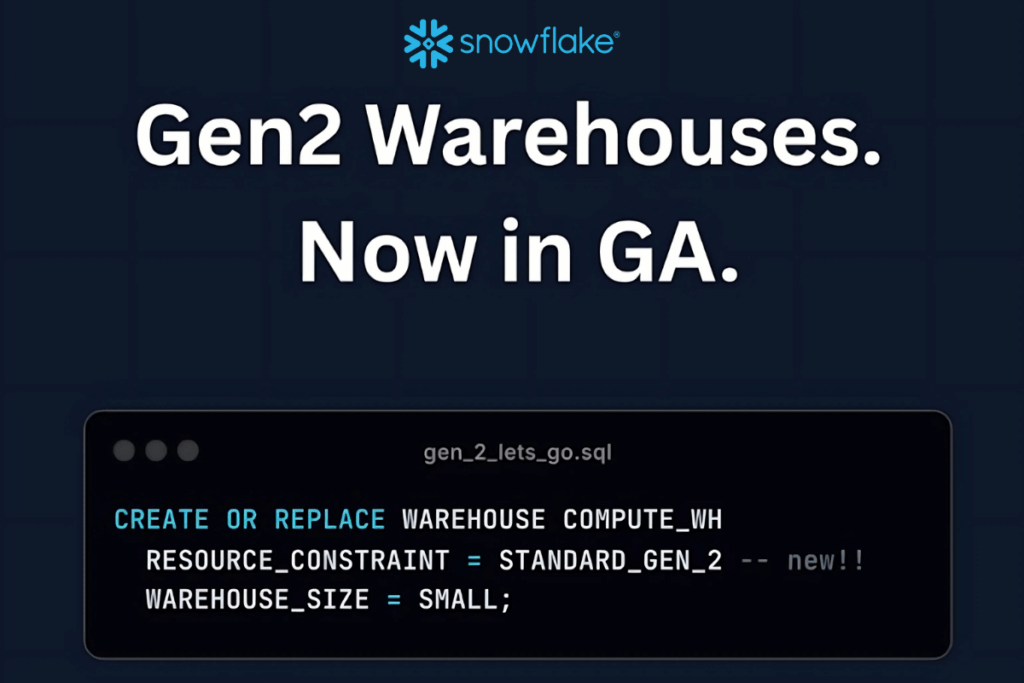
Gen2 Warehouses are the next evolution of Snowflake’s standard virtual warehouses. They are built on upgraded hardware with intelligent software and performance optimizations that deliver an average of 2.1x better performance than standard warehouses.
Key Benefits:
- Improved DML Performance: Gen2 is especially effective for heavy DML operations such as DELETE, UPDATE, MERGE, and large table scans;
- Simple Upgrade Path: Converting an existing standard warehouse to a Gen2 warehouse is straightforward, just use a simple ALTER WAREHOUSE command;
- Seamless Transition: No need to reset applications, re-establish connections, or modify permissions. Everything continues to function as before.
This makes Gen2 an ideal choice for users looking to accelerate their data processing pipelines without rearchitecting their setup.
How can Gen2 Warehouses be Beneficial in the Real World?
Gen2 Warehouse is ideal for performance-intensive operations. Its improved hardware and query engine optimizations make it perfect for:
- Large-Scale Data Transformation Pipelines (ELT): Daily or hourly ingestion of raw data followed by complex transformations improves as Gen2 warehouses are designed to speed up MERGE, UPDATE, and DELETE operations common in ELT jobs, significantly reducing pipeline runtimes;
- Data Cleansing and Compliance Workflows: Deleting or updating sensitive records to comply with data regulations (e.g., GDPR, CCPA) becomes more efficient as Gen2 warehouses accelerate DELETE and UPDATE operations on large datasets;
- Data Lake Operations & Table Scans: Running full-table scans on massive semi-structured datasets in Parquet/JSON accelerates with Gen2 warehouse’s optimizations for heavy read workloads and complex queries on large tables;
- Batch Processing for Machine Learning: Periodically creating feature sets by scanning and aggregating millions or billions of rows benefits from Gen2 warehouse’s faster scan and DML times, which enhance the overall performance of the model training pipeline.
Adaptive Compute: Real-Time Elasticity with Smarter Automation
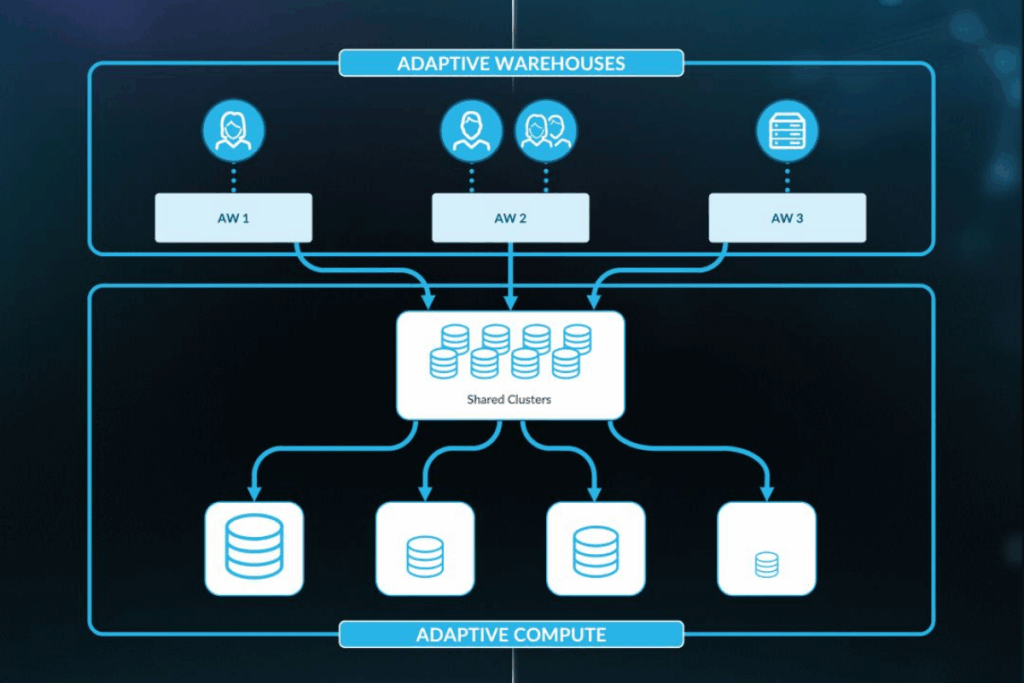
Building upon the advancements of Gen2, Snowflake’s Adaptive Compute engine introduces a fully automated, real-time scaling solution. Adaptive Warehouses intelligently respond to changing workload patterns and are designed to simplify warehouse management.
Key Benefits:
- Automatic Real-Time Scaling: Dynamically scales compute resources up and down based on demand, without manual tuning;
- Optimized Concurrency: Removes the need to predefine multi-cluster configurations or concurrency limits;
- Smart Behavior Management: Automatically manages cluster sizing, auto-suspend/resume behavior, and intelligent query routing;
- Effortless Conversion: Just like with Gen2, converting to Adaptive Compute requires only a simple ALTER WAREHOUSE statement.
With Adaptive Compute, Snowflake users can maximize performance and efficiency with minimal overhead, especially when dealing with unpredictable or highly variable workloads.
How Does Adaptive Compute (Adaptive Warehouses) Solve Real World Challenges?
Adaptive Compute shines in dynamic, unpredictable workloads where resource needs can spike or drop rapidly.
- BI Dashboards & Interactive Analytics: Hundreds or thousands of users running ad hoc queries during business hours leverage Adaptive Compute to automatically scales to handle concurrency spikes, avoiding slow queries or queuing;
- Data Apps with Irregular Usage Patterns: SaaS or internal apps powered by Snowflake, with inconsistent query demand based on user behavior uses Adaptive Compute to provide elastic scaling ensuring responsive performance while minimizing costs during low usage;
- Automated Reporting & Scheduling Systems: A mix of small and large reports being generated on-demand or on different schedules consume Adaptive Compute to adapt compute resources based on real-time workload size and complexity;
- Multi-Tenant Data Platforms: Serving many clients/customers with isolated workloads, each with different data and usage patterns powered by Adaptive Compute eliminates the need to over-provision or micromanage clusters for different tenants.
Which One Should I Use?
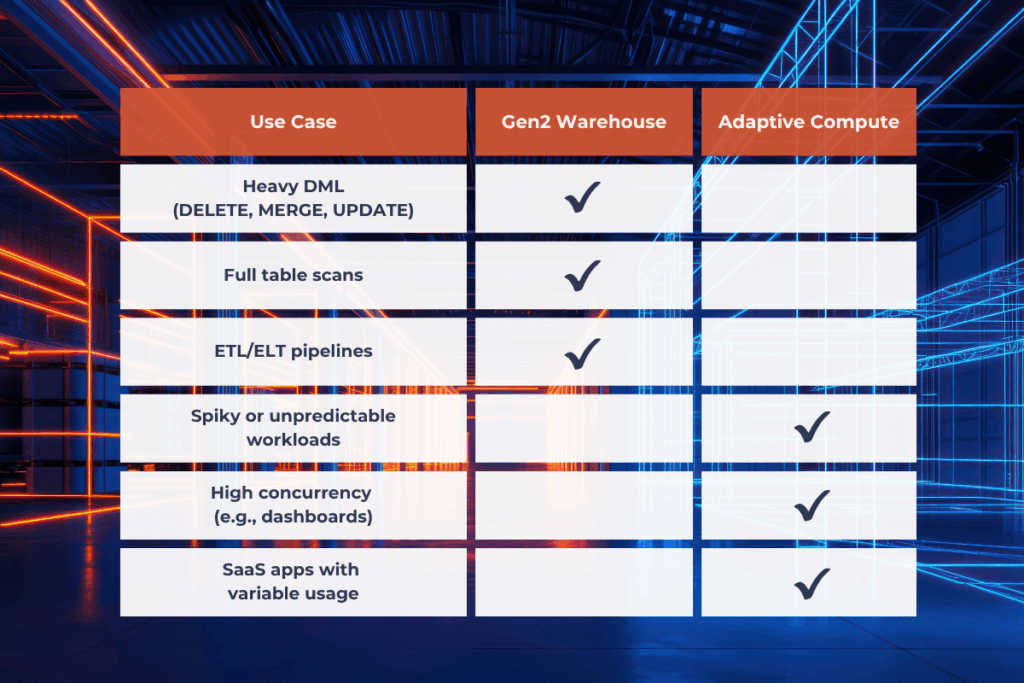
Snowflake continues to push the boundaries of performance and usability with the introduction of Gen2 and Adaptive Warehouses. Whether you’re running complex DML queries or managing rapidly changing workloads, these next-generation compute options offer significant improvements in speed, flexibility, and simplicity.
Upgrading is easy and non-disruptive, making it a low-effort, high-reward move for any Snowflake user looking to stay ahead in a data-driven world.
If you have questions about how adaptive warehouses could help you or which of the two is the right choice for you, contact evolv. We are here to guide you through the process and set you up for success.
Chris Schneider helps organizations unlock the full potential of their data ecosystems by designing scalable architectures and intuitive processes that prioritize quality. With deep expertise in Data Architecture and a strong foundation in Financial Services, Chris has led transformative initiatives that turn complex data challenges into strategic advantages. His work includes building metadata-driven frameworks and robust analytic capabilities that empower teams to use the right tools effectively, driving informed decisions and measurable successes.
